Sigma 18-200mm F3.5-6.3 DC lens review
-
-
Written by Gordon Laing
Quality
Pictured below from left to right are the Sigma, Nikkor and Tamron 18-200mm lenses in their shortest positions. Each lens measures 70x78mm, 77x97mm and 73x84mm (diameter x length) respectively. The Sigma’s clearly the smallest of the group, although the Tamron is only slightly larger; the Nikkor is comfortably bigger than either of them.
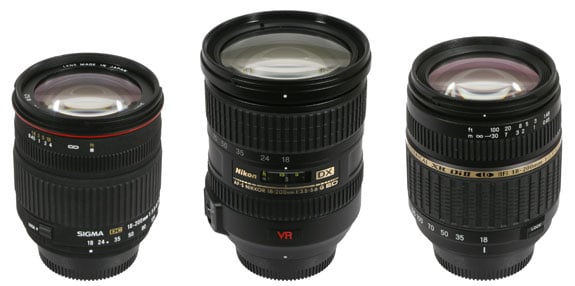
When zoomed-in to their longest focal lengths, the Sigma, Nikkor and Tamron lenses extend by a further 53, 65 and 66mm respectively, each employing two barrel sections. As pictured below, the Sigma remains the smallest of the three and the Nikkor comfortably the largest. The Nikkor’s size is reflected in its 72mm filter thread, which is considerably greater than the 62mm threads of the Sigma and Tamron.
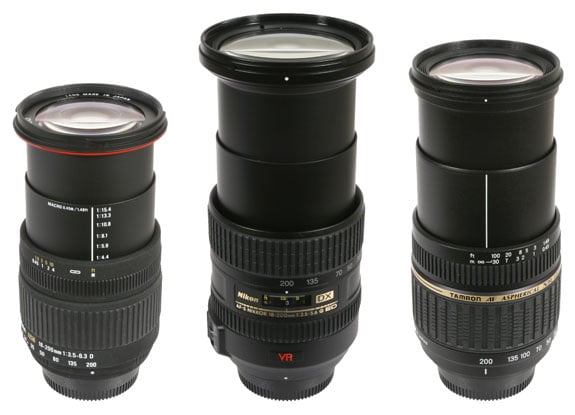
Weighing just 405g, the Sigma’s the lightest of the group, although the Tamron’s only 18g heavier; at 560g the Nikkor’s noticeably heavier than either. The Nikkor’s additional weight is undoubtedly down to its superior build quality and slightly faster optical performance at the telephoto end. It sports a focal ratio of f3.5~5.6, compared to the f3.5~6.3 of the Sigma and Tamron models.
In terms of build quality, the Sigma and Tamron are roughly similar. They’re both lightweight budget lenses so unsurprisingly feel quite plasticky with less smooth mechanics than a premium product. Don’t get us wrong, they’re not poorly constructed, but are clearly below the build quality of more expensive lenses.
For example, you need only compare them with the Nikkor 18-200mm to immediately notice how this pricier model looks and feels to a much higher standard. It’s more solid with smoother mechanics delivering a greater impression of confidence in use. Of course the Nikkor costs twice as much, but if you’re after the best build quality, you’ll need to spend the extra.
We’re pleased to report all three employ internal focusing with non-rotating end sections – important for anyone who uses polarisers, although obviously the Nikkor’s wider thread will incur higher-priced filters. Thankfully, all three lenses were supplied with hoods.
In terms of focusing speed, the Nikkor’s premium SWM system was certainly quicker than the Sigma and Tamron, but not by a large degree. Where they really differed though was in focusing noise with both the Sigma and Tamron models being considerably louder than the Nikkor. The Tamron was worst of all in this respect, grinding quite conspicuously during manually focusing. Again if ultimate discretion is your thing, you’ll need to spend more on the Nikkor.
Coverage, wide angle with Nikon D2X
All three lenses on test claim the same 18-200mm focal length, but it’s always worth putting this to the test. To compare actual coverage we shot the same scene with each lens within a few moments of each other; the camera was mounted on a tripod to ensure a consistent position. Here the lenses were set to their widest 18mm focal length.
At first glance the three lenses on test appear to deliver identical wide-angle coverage, but look closer and there’s subtle differences. The Tamron 18-200mm actually delivered a fractionally wider view at 18mm than the others, followed closely by the Nikkor, and finally the Sigma.
Sigma 18-200mm F3.5-6.3 DC |
Nikkor AF-S DX VR 18-200mm 3.5-5.6G IF-ED |
Tamron AF18-200mm F3.5-6.3 XR Di-II LD IF | ||
 |  |  | ||
| 18-200mm at 18mm (27mm equivalent using Nikon D2X) | 18-200mm at 18mm (27mm equivalent using Nikon D2X) | 18-200mm at 18mm (27mm equivalent using Nikon D2X) |
Coverage, telephoto
with Nikon D2X
Next up came the telephoto-end of each lens. Again to compare actual coverage we shot the same scene with each lens within a few moments of each other; the camera was mounted on a tripod to ensure a consistent position. Here the lenses were set to their longest 200mm focal length.
Here all three lenses performed similarly, although upon close examination, the Nikkor’s field was fractionally tighter than the others. In practice though it’s fair to say all three lenses deliver essentially the same field of views.
Sigma 18-200mm F3.5-6.3 DC |
Nikkor AF-S DX VR 18-200mm 3.5-5.6G IF-ED |
Tamron AF18-200mm F3.5-6.3 XR Di-II LD IF | ||
 |  |  | ||
| 18-200mm at 200mm (300mm equivalent using Nikon D2X) | 18-200mm at 200mm (300mm equivalent using Nikon D2X) | 18-200mm at 200mm (300mm equivalent using Nikon D2X) |
Note: both the Sigma and Tamron lenses were fitted with zoom lock switches to prevent their barrels from extending beyond the 18mm focal length while in transit. That said neither barrels of the models on test could be described as loose, and it was possible to zoom-in to 200mm on both, point vertically upwards and not suffer from any creep back down. The Nikkor lens didn’t have a lock, but could be pointed up or down without suffering from discernable creep.
Outdoor scene, tested with Nikon D2X
| The centre crops in the middle row clearly show the Sigma being the sharpest, although when it comes to the edges, the Nikkor lens takes the lead. Both out-perform the Tamron here. |
Sigma 18-200mm F3.5-6.3 DC |
Nikkor AF-S DX VR 18-200mm 3.5-5.6G IF-ED |
Tamron AF18-200mm F3.5-6.3 XR Di-II LD IF | ||
 |  |  | ||
1/80, f8, 100 ISO |
1/80, f8, 100 ISO |
1/80, f8, 100 ISO | ||
 |  |  | ||
1/80, f8, 100 ISO |
1/80, f8, 100 ISO |
1/80, f8, 100 ISO | ||
 | 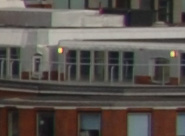 |  | ||
1/80, f8, 100 ISO |
1/80, f8, 100 ISO |
1/80, f8, 100 ISO |
Sigma 18-200mm results continued…
Outdoor / Resolution / Corner sharpness / Fringe and macro / Geometry / Vignetting
Resolution, tested with Nikon D2X
There are tonal differences between the crops, but the resolving power in the central area of the chart is much the same for each lens. They each score 2250 and 1900 lpph for horizontal and vertical resolution respectively.
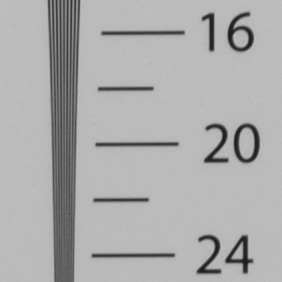 It’s revealing to compare these against the Nikon D2X fitted with a 50mm f1.8. The prime lens unsurprisingly resolves more detail than the zooms here, boasting 2450 and 2300 lpph for horizontal and vertical resolution respectively. |
Sigma 18-200mm F3.5-6.3 DC using Nikon D2X |
Nikkor AF-S DX VR 18-200mm 3.5-5.6G IF-ED using Nikon D2X | |
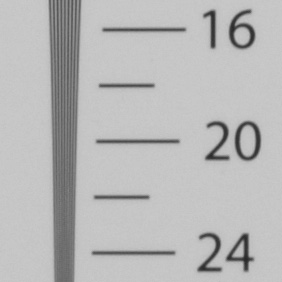 | ||
2250 lpph, 18-200mm at 200mm, f8, 100 ISO |
2250 lpph, 18-200mm at 200mm, f8, 100 ISO | |
Tamron AF18-200mm F3.5-6.3 XR Di-II LD IF using Nikon D2X |
Nikkor AF 50mm f1.8 using Nikon D2X | |
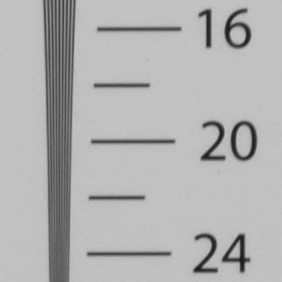 | 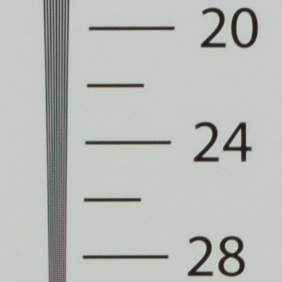 | |
2250 lpph, 18-200mm at 200mm, f8, 100 ISO |
2450 lpph, 50mm, f8, 100 ISO |
Sigma 18-200mm F3.5-6.3 DC using Nikon D2X |
Nikkor AF-S DX VR 18-200mm 3.5-5.6G IF-ED using Nikon D2X | |
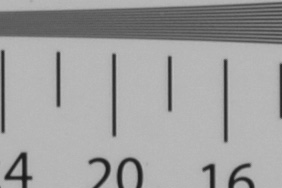 | 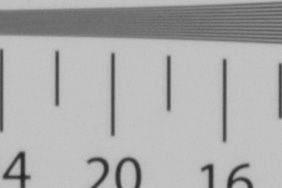 | |
1900 lpph, 18-200mm at 200mm, f8, 100 ISO |
1900 lpph, 18-200mm at 200mm, f8, 100 ISO | |
Tamron AF18-200mm F3.5-6.3 XR Di-II LD IF using Nikon D2X |
Nikkor AF 50mm f1.8 using Nikon D2X | |
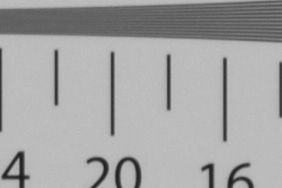 | 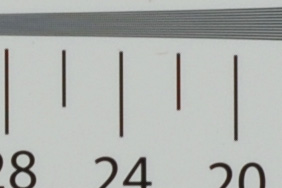 | |
1900 lpph, 18-200mm at 200mm, f8, 100 ISO |
2300 lpph, 50mm, f8, 100 ISO |
Sigma 18-200mm results continued…
Outdoor / Resolution / Corner sharpness / Fringe and macro / Geometry / Vignetting
Corner sharpness, tested with Nikon D2X
At the 18mm wide angle end, the Sigma visibly delivers the poorest result here, although to be fair both it and the Tamron samples improved considerably just a short distance in from the extremes. The story is also the same at the 200mm telephoto end, with both the Tamron and Nikkor out-performing the Sigma. |
Sigma 18-200mm F3.5-6.3 DC |
Nikkor AF-S DX VR 18-200mm 3.5-5.6G IF-ED |
Tamron AF18-200mm F3.5-6.3 XR Di-II LD IF | ||
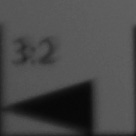 | 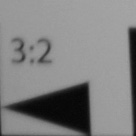 | 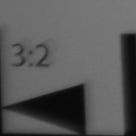 | ||
18-200mm at 18mm f3.5 |
18-200mm at 18mm f3.5 |
18-200mm at 18mm f3.5 | ||
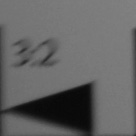 | 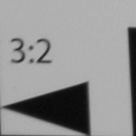 | 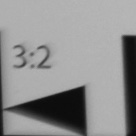 | ||
18-200mm at 18mm f8 |
18-200mm at 18mm f8 |
18-200mm at 18mm f8 | ||
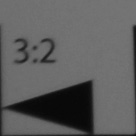 | 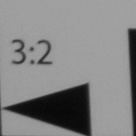 | 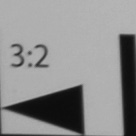 | ||
18-200mm at 18mm f16 |
18-200mm at 18mm f16 |
18-200mm at 18mm f16 | ||
Sigma 18-200mm F3.5-6.3 DC |
Nikkor AF-S DX VR 18-200mm 3.5-5.6G IF-ED |
Tamron AF18-200mm F3.5-6.3 XR Di-II LD IF | ||
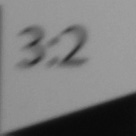 | 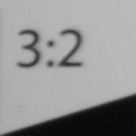 | 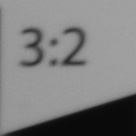 | ||
18-200mm at 200mm f6.3 |
18-200mm at 200mm f5.6 |
18-200mm at 200mm f6.3 | ||
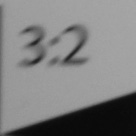 | 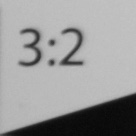 | 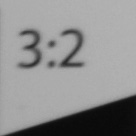 | ||
18-200mm at 200mm f8 |
18-200mm at 200mm f8 |
18-200mm at 200mm f8 | ||
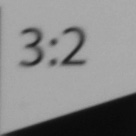 | 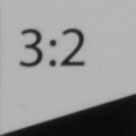 | 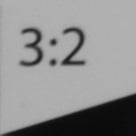 | ||
18-200mm at 200mm f16 |
18-200mm at 200mm f16 |
18-200mm at 200mm f16 |
Sigma 18-200mm results continued…
Outdoor / Resolution / Corner sharpness / Fringe and macro / Geometry / Vignetting
Chromatic aberration and purple fringing, tested with Nikon D2X
Sigma 18-200mm F3.5-6.3 DC |
Nikkor AF-S DX VR 18-200mm 3.5-5.6G IF-ED |
Tamron AF18-200mm F3.5-6.3 XR Di-II LD IF | ||
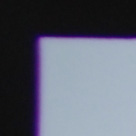 | 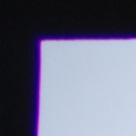 | 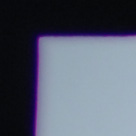 | ||
18-200mm at 18mm f3.5 |
18-200mm at 18mm f3.5 |
18-200mm at 18mm f3.5 | ||
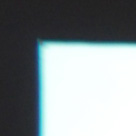 | 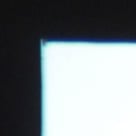 | 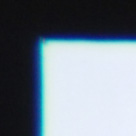 | ||
18-200mm at 200mm f6.3 |
18-200mm at 200mm f5.6 |
18-200mm at 200mm f6.3 |
Macro, tested with Nikon D2X
|
To measure macro performance we photographed a custom chart using settings which delivered the maximum possible reproduction. The dark lines are 10mm apart. Each lens was tested with the Nikon D2X at f8 in Aperture Priority mode. Interestingly each lens was able to focus much closer to our target than the manufacturer’s specifications suggested. Sigma, Nikon and Tamron quoted closest focusing distances of 45, 50 and 45cm respectively, but by experimenting with different focal lengths and positions, we achieved the maximum reproductions below at closer distances. As can be seen below, the Sigma and Tamron lenses were able to deliver greater overall reproduction than the Nikkor model. |
Sigma 18-200mm F3.5-6.3 DC |
Nikkor AF-S DX VR 18-200mm 3.5-5.6G IF-ED |
Tamron AF18-200mm F3.5-6.3 XR Di-II LD IF | ||
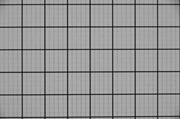 | 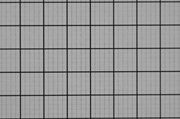 | |||
|
18-200mm at 200mm f8 Max area of 78x52mm |
18-200mm at 170mm f8 Max area of 104x70mm |
18-200mm at 200mm f8 Max area of 78x52mm |
Sigma 18-200mm results continued…
Outdoor / Resolution / Corner sharpness / Fringe and macro / Geometry / Vignetting
Geometry, wide angle, tested with Nikon D2X
Sigma 18-200mm F3.5-6.3 DC |
Nikkor AF-S DX VR 18-200mm 3.5-5.6G IF-ED |
Tamron AF18-200mm F3.5-6.3 XR Di-II LD IF | ||
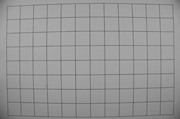 | 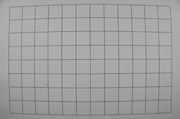 | 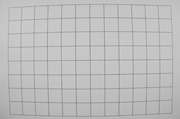 | ||
|
18-200mm at 18mm f8 Distortion: 4.46% barrel |
18-200mm at 18mm f8 Distortion: 5.26% barrel |
18-200mm at 18mm f8 Distortion: 5.38% barrel |
Geometry, telephoto, tested with Nikon D2X
|
To measure geometric distortion we photographed a custom test chart consisting of a grid pattern with perfectly straight lines. The lenses were tested at their longest focal length with an aperture of f8 using a Nikon D2X in Aperture Priority mode. The images were analysed with Imatest using 5th Order line calculation and the full areas presented here at a reduced resolution. All three lenses exhibited roughly the same degree of pincushion distortion when zoomed-into 200mm, although in contrast to the wide-angle result, the Sigma scored worst here. |
Sigma 18-200mm F3.5-6.3 DC |
Nikkor AF-S DX VR 18-200mm 3.5-5.6G IF-ED |
Tamron AF18-200mm F3.5-6.3 XR Di-II LD IF | ||
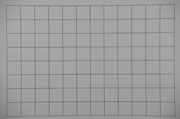 | 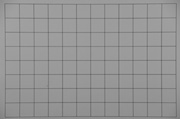 | 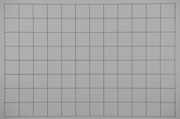 | ||
|
18-200mm at 200mm f8 Distortion: 1.76% pincushion |
18-200mm at 200mm f8 Distortion: 1.22% pincushion |
18-200mm at 200mm f8 Distortion: 1.19% pincushion |
Sigma 18-200mm results continued…
Outdoor / Resolution / Corner sharpness / Fringe and macro / Geometry / Vignetting
To measure geometric distortion we photographed a test chart consisting of a grid pattern with perfectly straight lines. The lenses were tested at their widest focal length with an aperture of f8 using a Nikon D2X in Aperture Priority mode. The images were analysed with Imatest using 5th Order line calculation and the full areas presented here at a reduced resolution.
All three lenses exhibited roughly the same degree of barrel distortion at their wide angle setting, although the Sigma model managed the best result here.
Uniformity, wide angle, tested with Nikon D2X
Sigma 18-200mm F3.5-6.3 DC |
Nikkor AF-S DX VR 18-200mm 3.5-5.6G IF-ED |
Tamron AF18-200mm F3.5-6.3 XR Di-II LD IF | ||
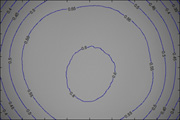 | 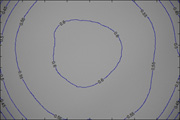 | 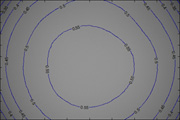 | ||
|
18-200mm at 18mm f3.5 Mean corner fall-off: 53% |
18-200mm at 18mm f3.5 Mean corner fall-off: 62.2% |
18-200mm at 18mm f3.5 Mean corner fall-off: 52.6% |
Uniformity, telephoto, tested with Nikon D2X
|
To measure lens vignetting and light fall-off we photographed a white target with a highly diffused custom filter. The lenses were tested at their longest focal length with the aperture wide open using a Nikon D2X in Aperture Priority mode. The images were analysed with Imatest and the full areas presented here at a reduced resolution. Bigger percentages are better. Zoomed-in to their longest 200mm focal lengths, the Sigma and Nikkor lenses perform similarly, although the Tamron enjoys a small lead in this test. |
Sigma 18-200mm F3.5-6.3 DC |
Nikkor AF-S DX VR 18-200mm 3.5-5.6G IF-ED |
Tamron AF18-200mm F3.5-6.3 XR Di-II LD IF | ||
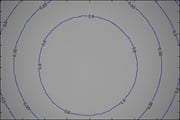 | 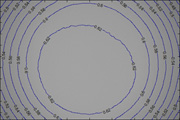 | 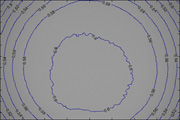 | ||
|
18-200mm at 200mm f6.3 Mean corner fall-off: 72.9% |
18-200mm at 200mm f5.6 Mean corner fall-off: 73.4% |
18-200mm at 200mm f6.3 Mean corner fall-off: 79.7% |
Sigma 18-200mm results continued…
Outdoor / Resolution / Corner sharpness / Fringe and macro / Geometry / Vignetting
To measure lens vignetting and light fall-off we photographed a white target with a highly diffused custom filter. The lenses were tested at their widest focal length with the aperture wide open using a Nikon D2X in Aperture Priority mode. The images were analysed with Imatest and the full areas presented here at a reduced resolution. Bigger percentages are better.
The Sigma and Tamron lenses perform similarly here, with each losing almost half their light by the time you reach the corners. Falling off by around 10% less in the corners, the Nikkor 18-200mm VR comfortably out-performs its cheaper rivals in terms of vignetting at wide angle.




